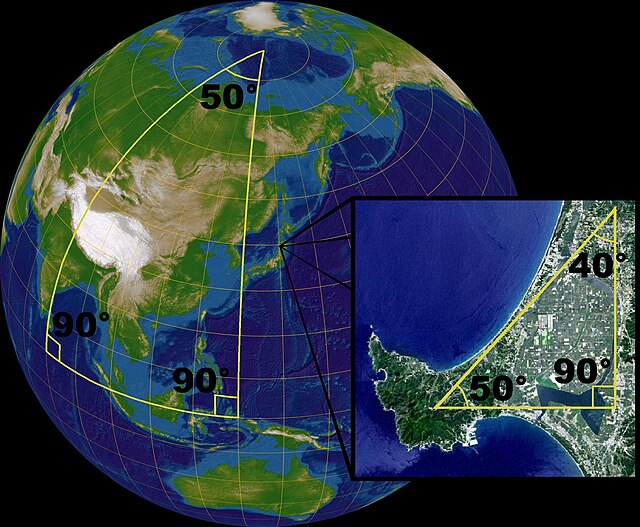The Elements is a mathematical treatise consisting of 13 books attributed to the ancient Greek mathematician Euclid c. 300 BC. It is a collection of definitions, postulates, propositions, and mathematical proofs of the propositions. The books cover plane and solid Euclidean geometry, elementary number theory, and incommensurable lines. Elements is the oldest extant large-scale deductive treatment of mathematics. It has proven instrumental in the development of logic and modern science, and its logical rigor was not surpassed until the 19th century.
Title page of Sir Henry Billingsley's first English version of Euclid's Elements, 1570. During the Renaissance, Euclid was commonly conflated with the philosopher Euclid of Megara.
A fragment of Euclid's Elements on part of the Oxyrhynchus papyri
Double-page from the Ishaq ibn Hunayn's Arabic Translation of Elementa. Iraq, 1270. Chester Beatty Library
An illumination from a manuscript based on Adelard of Bath's translation of the Elements, c. 1309–1316; Adelard's is the oldest surviving translation of the Elements into Latin, done in the 12th-century work and translated from Arabic.
Mathematics is an area of knowledge that includes the topics of numbers, formulas and related structures, shapes and the spaces in which they are contained, and quantities and their changes. These topics are represented in modern mathematics with the major subdisciplines of number theory, algebra, geometry, and analysis, respectively. There is no general consensus among mathematicians about a common definition for their academic discipline.
This is the Ulam spiral, which illustrates the distribution of prime numbers. The dark diagonal lines in the spiral hint at the hypothesized approximate independence between being prime and being a value of a quadratic polynomial, a conjecture now known as Hardy and Littlewood's Conjecture F.
On the surface of a sphere, Euclidean geometry only applies as a local approximation. For larger scales the sum of the angles of a triangle is not equal to 180°.
The Babylonian mathematical tablet Plimpton 322, dated to 1800 BC
A page from al-Khwārizmī's Algebra








